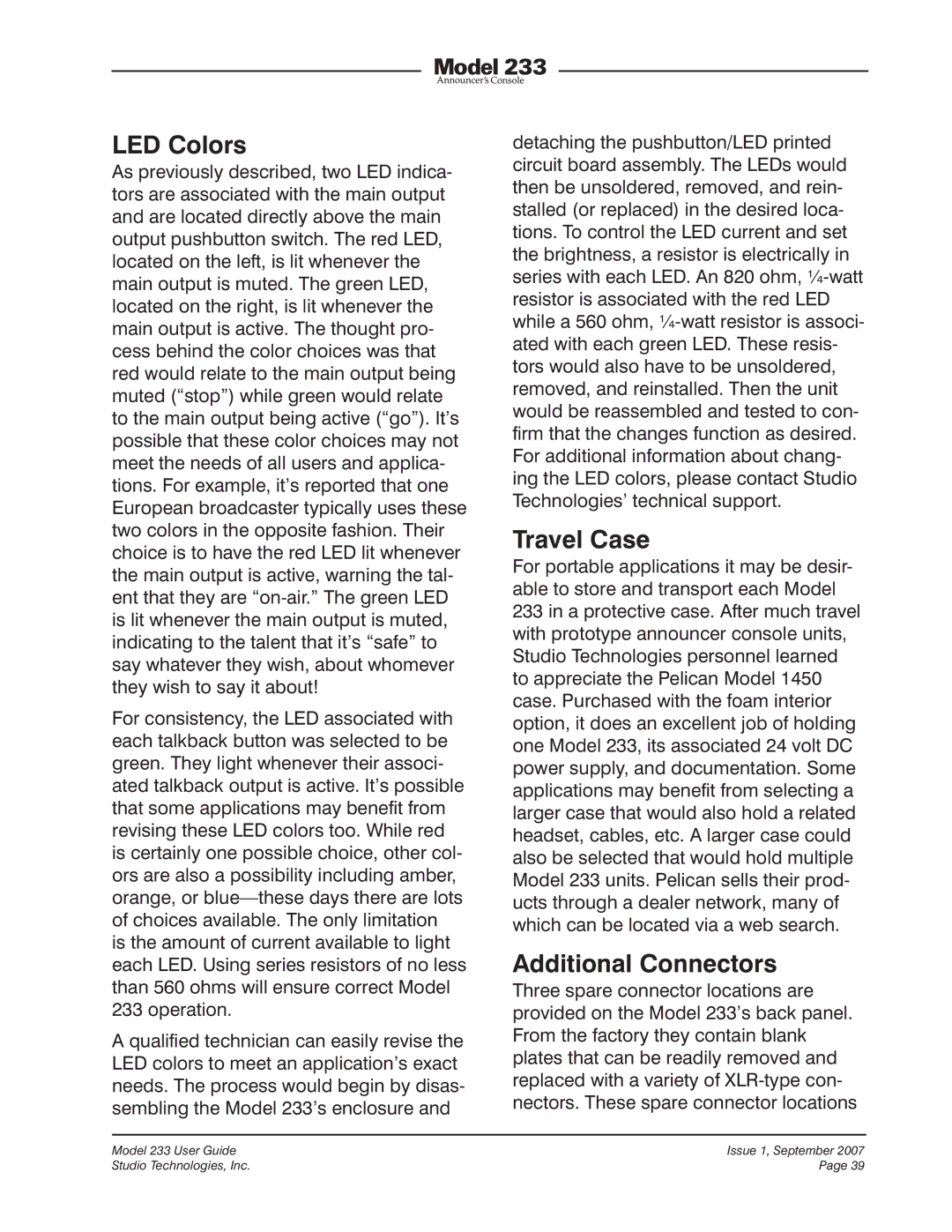
LED Colors
As previously described, two LED indica- tors are associated with the main output and are located directly above the main output pushbutton switch. The red LED, located on the left, is lit whenever the main output is muted. The green LED, located on the right, is lit whenever the main output is active. The thought pro- cess behind the color choices was that red would relate to the main output being muted (“stop”) while green would relate to the main output being active (“go”). It’s possible that these color choices may not meet the needs of all users and applica- tions. For example, it’s reported that one European broadcaster typically uses these two colors in the opposite fashion. Their choice is to have the red LED lit whenever the main output is active, warning the tal- ent that they are
For consistency, the LED associated with each talkback button was selected to be green. They light whenever their associ- ated talkback output is active. It’s possible that some applications may benefit from revising these LED colors too. While red is certainly one possible choice, other col- ors are also a possibility including amber, orange, or
A qualified technician can easily revise the LED colors to meet an application’s exact needs. The process would begin by disas- sembling the Model 233’s enclosure and
detaching the pushbutton/LED printed circuit board assembly. The LEDs would then be unsoldered, removed, and rein- stalled (or replaced) in the desired loca- tions. To control the LED current and set the brightness, a resistor is electrically in series with each LED. An 820 ohm,
Travel Case
For portable applications it may be desir- able to store and transport each Model 233 in a protective case. After much travel with prototype announcer console units, Studio Technologies personnel learned to appreciate the Pelican Model 1450 case. Purchased with the foam interior option, it does an excellent job of holding one Model 233, its associated 24 volt DC power supply, and documentation. Some applications may benefit from selecting a larger case that would also hold a related headset, cables, etc. A larger case could also be selected that would hold multiple Model 233 units. Pelican sells their prod- ucts through a dealer network, many of which can be located via a web search.
Additional Connectors
Three spare connector locations are provided on the Model 233’s back panel. From the factory they contain blank plates that can be readily removed and replaced with a variety of
Model 233 User Guide | Issue 1, September 2007 |
Studio Technologies, Inc. | Page 39 |
